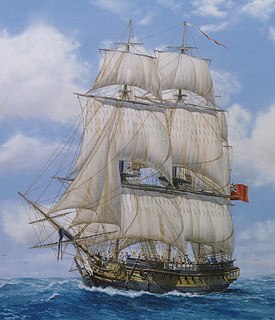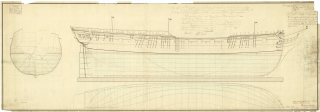Four classes of frigate of the Royal Navy have been named the Amazon class:
Twelve ships of the Royal Navy have borne the name HMS Thetis, named after the sea-nymph in Greek mythology:
Sixteen ships and two shore establishments of the Royal Navy have been named HMS Fox, after the fox.
Nine ships of the Royal Navy have been named HMS Amazon, after the mythical female warriors.
Nine Royal Navy ships have borne the name HMS Ambuscade:

The rating system of the Royal Navy and its predecessors was used by the Royal Navy between the beginning of the 17th century and the middle of the 19th century to categorise sailing warships, initially classing them according to their assigned complement of men, and later according to the number of their carriage-mounted guns. The rating system of the Royal Navy formally came to an end in the late 19th century by declaration of the Admiralty. The main cause behind this declaration focused on new types of gun, the introduction of steam propulsion and the use of iron and steel armour which made rating ships by the number of guns obsolete.
Six ships of the Royal Navy have been named HMS Amethyst, whilst another was planned:
The Endymion class was a class of six Royal Navy 40-gun fifth-rate frigates, with the prototype launched in 1797 and five slightly amended versions built of fir launched from 1813 to 1814.

HMS Amazon, was a 36-gun frigate, built at Rotherhithe by Wells & Co. in 1795 to a design by Sir William Rule. Carrying a main battery of 18-pounder long guns, she was the first of a class of four frigates. She spent her entire career in the Channel, part of the Inshore Squadron under Sir Edward Pellew. She was wrecked in Audierne Bay in 1797, following an engagement with the French ship-of-the-line, Droits de l'Homme.
Nine ships of the Royal Navy have borne the name HMS Undaunted:
Seven ships of the Royal Navy have borne the name HMS Fowey, either after the Cornish town of Fowey, or the River Fowey which runs through it, whilst another two were planned:

HMS Melampus was a Royal Navy fifth-rate frigate that served during the French Revolutionary and Napoleonic Wars. She captured numerous prizes before the British sold her to the Royal Netherlands Navy in 1815. With the Dutch, she participated in a major action at Algiers and, then, in a number of colonial punitive expeditions in the Dutch East Indies.

HMS Ambuscade was a 32-gun fifth-rate frigate of the Royal Navy, built in the Grove Street shipyard of Adams & Barnard at Depford in 1773. The French captured her in 1798 but the British recaptured her in 1803. She was broken up in 1810.
HMS Tweed may refer to any one of several Royal Navy ships named for the River Tweed, including:

HMSEmerald was a 36-gun Amazon-class fifth rate frigate that Sir William Rule designed in 1794 for the Royal Navy. The Admiralty ordered her construction towards the end of May 1794 and work began the following month at Northfleet dockyard. She was completed on 12 October 1795 and joined Admiral John Jervis's fleet in the Mediterranean.

The Amazon-class frigates of 1773, made up of 32-gun fifth rates with a main battery of 12-pounder guns.
HMS Stag was a 32-gun fifth-rate frigate built for the Royal Navy. She was ordered in 1790 and work began in March 1792 at Chatham Docks. Completed in August 1794, Stag spent much of her service in home waters, where she worked to protect British shipping from French privateers. In an action on 22 August 1795, Stag engaged, and forced the surrender of, the Dutch frigate Alliante, and took part in the chase that ended with the capture of Bonne Citoyenne by HMS Phaeton on 10 March 1796.

HMS Artois was a fifth-rate Artois-class frigate of the Royal Navy, designed by Sir John Henslow and launched in 1794 at Rotherhithe as the lead ship of her class. She served for the majority of her career in the English Channel under the command of Edmund Nagle in the squadrons of Edward Pellew and John Borlase Warren, notably taking part in the action of 21 October 1794 where she captured the 44-gun frigate La Révolutionnaire almost singlehandedly. She participated in a number of other actions and events including the attempted invasion of France in 1795. Artois continued to serve actively on the coast of France in blockade and patrolling roles, taking a large number of ships as prizes, until she was wrecked with no loss of life off Île de Ré on 31 July 1797 while attempting to reconnoitre the harbour of La Rochelle.